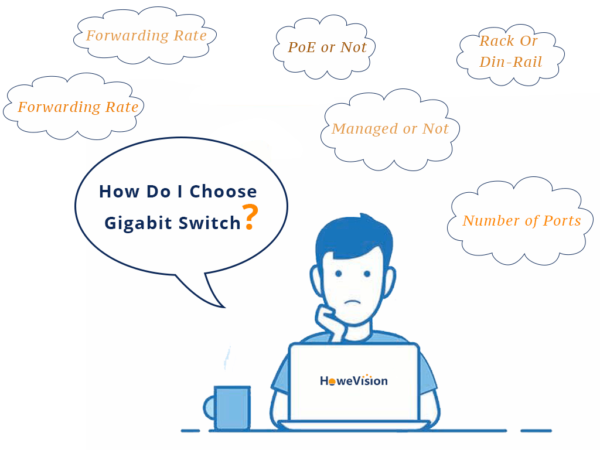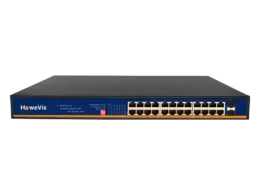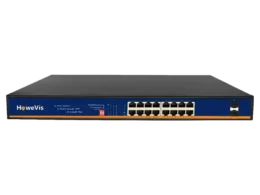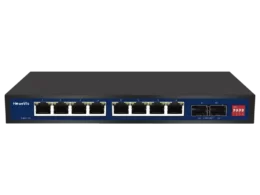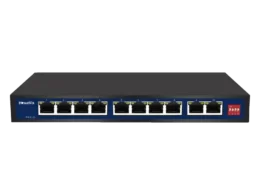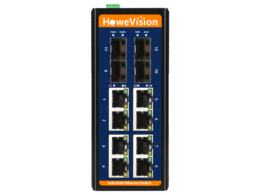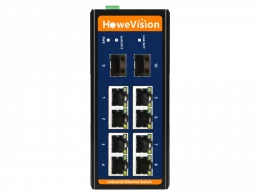Sometimes choosing a gigabit switch creates a lot of difficulty for people. Users feel they cannot make the right choice without expert advice.
But this is not the scenario at all. That’s because by considering some essential factors, an individual can quickly get the best gigabit switch.
So, if you are unaware of all these factors, don’t worry because, in this article, I will clarify every element you need to consider when it is about choosing the gigabit switch.
A Short Overview of the Types of Gigabit Switches
A user needs to understand that there are three basic categories of gigabit network switches available. These are as follows.
Managed Switches
Managed switches have innovative features. For example, these switches are pretty capable of monitoring the LAN and managing all other related tasks.
Users can have control over how the data travels across the network. Besides, security is up to the mark that users can decide who can access their network. Without the admin’s permission, no one can have access to the data at all.
Unmanaged Switches
Unmanaged switches come up with plug-and-play design modules that are sufficient to maintain communication between Ethernet devices only.
But, unfortunately, this switch comes with a fixed configuration, and one cannot do further customization according to needs. As a result, we majorly find unmanaged switches in home networks and small businesses.
PoE Switches
PoE switches are the advanced ones. They come up with electrical power and data transmission support across the network cables.
It simplifies the cabling process. Thus, end-users need not worry about the power outlet if there is the deployment of networking devices. For further clarification, you can read my post –What Type of PoE Switch Should I Buy?
Essential Pointers About Gigabit Switch
We need to keep in mind some essential pointers whenever it is about choosing the gigabit network switch. They are as follows.
Role of the Switch
The primary factor of consideration is the role of the switch. Without understanding the task for which you require the switch, choosing it won’t be easy.
If you are looking forward to extending the device to a wired network at home, an unmanaged switch will be a suitable choice.
But if you are planning to expand the network in a large area, one or more managed switches will be the option. Moreover, it depends on the port you are choosing. These come up with 4-ports, 8-ports, 16-ports, 24-ports, and 48-ports.
Among all these, the 4-port Gigabit Ethernet switch is relatively popular among users who want a simple gigabit switch for their home network.
Forwarding Rate of the Switch
The forwarding rate of the switch indicates the processing rate. Therefore, every gigabit switch comes up with different processing and forwarding data rates.
The processing rate indicates the transfer of data. It has a direct connection with the forwarding rate. If the processing rate is lower, then the forwarding rate will be slower, and vice versa. I will talk more about this point in the following section.
Therefore, users need to figure out the speed required for task completion.
Factors to Consider When Choosing a Gigabit Switch
Apart from the above pointers, it is also essential for a user to pay attention to the important factors when choosing the gigabit switch.
Here I am disclosing those important factors when you move ahead to buy a gigabit switch. These are as follows-
Capacity
Capacity is the factor that helps you to understand expandability. You will find switches with 8, 12, 16, 24, or 48 ports, and it is right to conclude that these all work differently.
The important is to choose the best one. If you choose the modular switches, these are pretty expandable as they are more like cabinets through which one can add additional modules of ports.
So, a user can start with a 12-port module and then expand it further depending on the time and requirements.
Besides, some switches are also swappable, which means you can add, remove, and even replace modules. Moreover, this will have no impact on the switch’s power, and restarting the switch will not be required.
Speed
The switch’s speed rating is also important to know as compared to the Ethernet speed rating. The modern network switches you will find in the market come up with up to 10 Gbps starting from 100 Mbps.
A user needs to find out the switch that supports the given network’s fastest speed. Do check out the duration in which the device shows change with the computer.
Sometimes the scenario changes a lot. For example, the switch supports the Gigabit Ethernet cables but shows network performance issues with connections coming in and out. As a result, it has a notable impact on network performance.
On the other hand, if you choose the full-duplex switch, these send and receive full-speed signals simultaneously. As a result, you can operate these switches efficiently, and their speed is twice as compared to a half-duplex switch.
Intelligence
Intelligence is a factor that is important to know by all those who are looking forward to choosing the business-grade switches. So don’t forget to examine the packet and check out the same factor.
Layer 3 switches are considered an excellent choice. That’s because they provide routing capabilities as well. However, the primary reason for choosing intelligence is that it leads to more efficient network usage.
PoE or Not
Do check out whether the switch you are using is PoE or not. You will find different types of network switches available along with the different types.
If you are looking forward to using the IP camera system for home, choosing the managed gigabit Ethernet switch with PoE will be the best option.
Number of Ports
The network switches come up with a different number of ports. The number of ports helps you get an idea about the number of devices to connect to the network.
Whenever you are placing an order for the switch, check out how many devices you can connect. Besides, make sure you can upgrade that switch in the future.
Always use those switches that come up with simple interfaces and fulfill your needs. For home or small office use, even a 16-port Gigabit Ethernet switch is a better option to consider.
If you still cannot figure out the number of ports, you can check out my post –How Many Ports Switches Do I Need?
Forwarding Rate
As said earlier, I will now explain the forwarding rate in this section. First, pay attention to the real forwarding rate. That’s because the gigabit switches currently support up to 130 MBPS forwarding rates. This rate can be as low as 15 MBPS and can go up to 130 MBPS.
Unfortunately, not all network switches come up with the same rate, so you need to check it out and do the performance test for clarity.
Fan or Fanless
Do check out whether the switch is fanless or not. The fanless switches are pretty silent in operation and will not create any nuisance in the surroundings.
But if you have no trouble with noise in the surroundings, you can go for those having a fan. But in a broader aspect, I suggest going for a fanless one. Almost all switches available at Howevision feature a fanless design.
Final Thoughts!
Now you know all the important factors to consider when placing an order for gigabit switches. Not to worry about anything because these parameters will help you choose the best gigabit switch easily.
Lastly, I suggest you invest in the proper switch after analyzing your needs. If you have doubts regarding gigabit switches, you are more than welcome to ask me.
